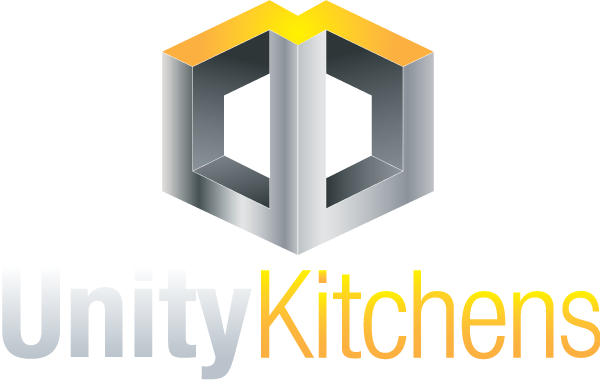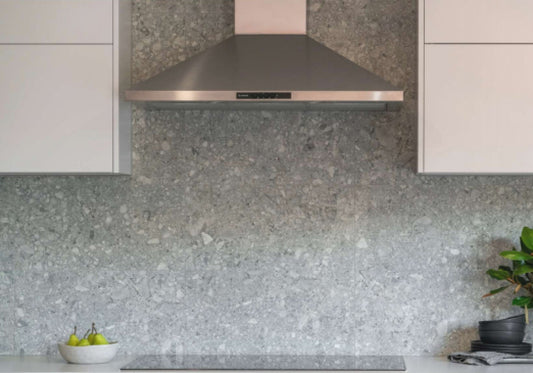
There are many elements that impact the value of the face materials used in your kitchen renovation. The main aspects are manufacturing and logistics, however durability, longevity, visual appeal and maintenance all need to be taken into consideration to help define the right choices for your home, budget and lifestyle requirements.
Each material has different applications, characteristics, and suitability requirements so we have constructed a brief summary to help navigate you through the options for your kitchen cabinets.
Substrate
The substrate for your interior finishes is a manufactured Medium-density fibreboard (MDF) material with some moisture repellent properties. The MDF material provides the structural integrity of your panel and it is the coating or finish that determines how it will look, feel and wear over time.
Solid timber kitchen doors and panels are still available although not common these days as the demand for that look is not high.
Thermolaminated Kitchen Doors and Panels:
You may also recognise them as vacuum form or vinyl doors, have the benefit of shaping the substrate to suit your desired style and are specifically manufactured as individual panels to meet the needs of each application. The surface material is an Acrylic that is glued to the doors and panels through a vacuum process. Under heat and pressure, the coating wraps the substrate to form a durable barrier to knocks and scrapes. This process allows for integrated profile designs and a continuous edge in a matt, semi-gloss and full gloss texture. Perfect for shaker style kitchen cabinets.
It is important to note that the process of vacuum forming leaves the doors and panels vulnerable when exposed to heat, moisture or humidity so the position of these panels in the design needs careful consideration to maintain product integrity long term. Thermolaminate comes with a 7-year limited warranty but will be void in the event of overexposure to the above conditions.
Melamine finished kitchens:
With a range of finishes and textures, the melamine board is made from a process of bonding melamine resin impregnated paper sheets to a flat MDF substrate through heat and pressure. The process is similar throughout the ranges but the finished coating processes differ to give the desired textures and are reflected in the pricing of the product.
The sheets are manufactured as a board in high volumes from the likes of Polytec, Formica and Laminex and distributed to joinery manufacturers. The kitchen doors and panels are then processed in our workshop from the pre-finished sheets, cut on the CNC router and have a plastic PVC or ABS edge applied with an edge bander.
The finishes available start from:
Solid colors in
- Stipple / Textured
- Matt
- Ultra matt
- Sheen
- High gloss
Timber prints in
- Matt
- Woodmatt
- Fine-grain
- Ravine
- Sheen and high gloss
Maintenance for each of these textures and colors can be slightly different; matt textures will not show up as much mess but take a little more effort to clean, whereas a sheen and gloss finish will show a little more in the reflective surface but marks can be removed slightly easier.
Benefits of melamine shelving:
Large array of colours and textures
Can be used in many applications to suit all budgets
1 or 2 mm plastic edging gives the doors and panels a durable covering from impact and is available in a wide range of matching or contrasting colours.
Manufacturing time can be efficient as it is done in house.
Limitations:
Inability to add profiles to the kitchen doors and panels
Edging is not seamless in a visual appeal.
Interesting fact:
Melamine is an organic chemical compound resin that is a characteristically durable thermosetting plastic also used in high pressure melamine dinnerware, laminate flooring, and whiteboards.
Melamine laminated material was invented at the Westinghouse Electric Corporation in the United States in 1912. Originally used to replace mica in electrical applications.
Timber Veneer Kitchen Doors and Panels
Timber veneer is real timber sliced finely to a thickness of 0.6 mm and laminated to an MDF substrate to give the appearance of solid timber.
The surface coverage is very economical as there is less timber required, however the substrate is still required. The manufacturing process is a little more involved and depending on the level of detail you require can add up in cost as the veneer material is required to be sealed to the desired finish after manufacturing.
The benefit is that timber is a natural product, but it can discolour over time being a natural material.
Acrylic Finish Kitchen Doors and Panels
The cold pressed process of bonding acrylic to the MDF substrate forms an impact resistant material similar to the ABS edging. Acrylic is a thermoplastic, meaning it can be melted down and recycled, this characteristic allows for absorption of impact when bonded to a solid substrate and reduces general wear and tear of the door or panel. The process of manufacturing allows the board to be cut and edged in the factory and is available in a variety of colours and finishes to suit your application.
Benefits for your new kitchen include:
- Very durable product
- Easy to clean
- Available in a matt and high gloss
Limitations:
- Colours and textures are limited
- Required edging is matching, but is not seamless
2 pack Polyurethane Kitchen Doors and Panels:
As the name suggests, it is a mixture of a 2 part solution #1 being a resin composed of acrylic paint and melamine and #2 is a polyurethane hardener. When mixed, the chemical reaction enables the solution to set. Due to small amounts of solvent in the paint, once applied the coating forms a barrier and dries very hard to protect the substrate. Being a polyurethane paint spray, the shape of the substrate is maintained, with seamless edging and detailed profiling, making it a great option for shaker style kitchen cabinets with profiled or routed finger pull doors “J profile options”.
The application of the paint is a highly skilled profession and the equipment required to apply the product, labour in preparation between coats and logistics adds both time to the manufacturing process and cost.
2 pack Kitchen door finishes are very versatile, with elegant and seamless finishes available in
- 30% gloss “Satin finish”
- 60% gloss “Semi Gloss” and
- 100% full gloss.
Additional benefits are:
- Polyurethane colours are able to be mixed to form unique tones to suit the overall style and finish of the room with metallic colours also available
- Can be used as a clear finish to natural timbers
- The product won’t peel
- Very easy to maintain and keep clean
- Doors can be recoated at a later date if needed
- Existing doors can be colour matched as required.
Cautions:
- Being that the finish is hard, the doors can be chipped from the wrong treatment
- 2 pack paint finishes come with our workmanship guarantee, but no extended warranty as the product will not fail unless mishandled. Very similar to your paint on your car, durable but not bulletproof.
- When choosing colours, be mindful of natural light and the tones of white selected, as the yellow tinted whites will show through as the product ages.



